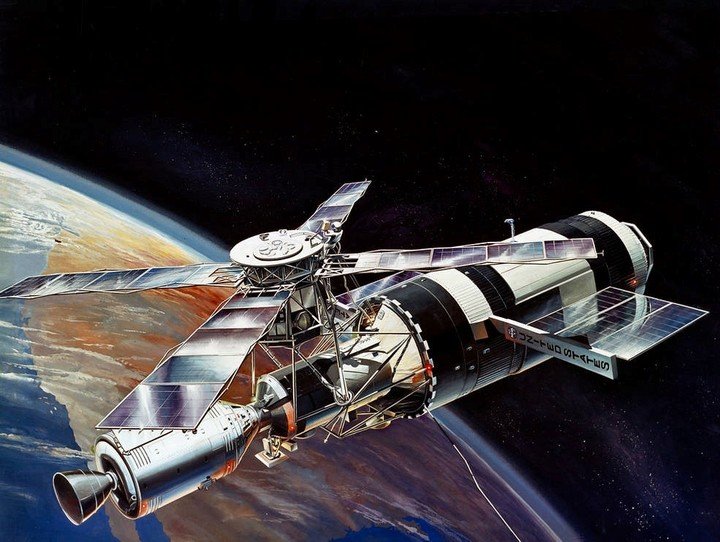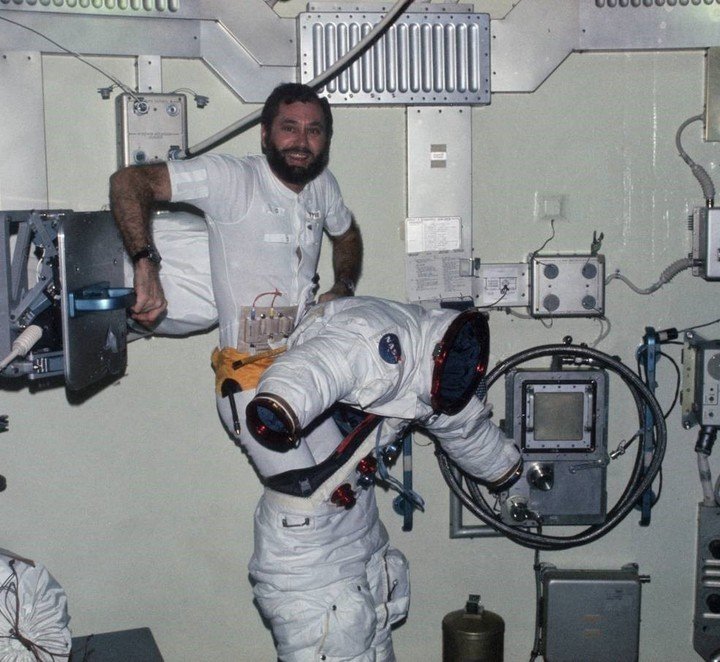Skylab 4 Experience and the Day Astronauts Riot in Space: Myth or Reality?

They rioted in space and stopped communicating with their superiors on Earth for some time. And they took the day off. Or at least this is the version that began circulating in the media at that time about the ship’s crew Skylab 4.
Nearly 50 years later, the true story, even by its protagonists, is very different. But the memories of what happened and the version of the rebellion created an atmosphere of intrigue that still lingers.
Skylab 4 was the third and last manned mission to Skylab, the first American space station and began on November 19, 1973 with the launch of the three astronauts aboard the Apollo spacecraft from the Saturn IB rocket and It lasted for 84 days, 1 hour and 16 minutes.
The real problem was born in the microscopic management. Endless succession of assigned tasks For the three astronauts who traveled on the Skylab 4 mission, which was bound for the US space station of the same name.
As Edward Gibson, the science pilot on board the Skylab 4 and the only survivor today of that crew of three astronauts, recounted: “Our mission Detailed management proved not to workExcept when that required a situation like take off or return (…) Fortunately, this harsh lesson has been carried over to future spaceflight and crews. “
The difficult lesson Gibson points out has been highlighted by more of a series of lapses than the crew’s decision to publicize their displeasure.
what happened?
It wasn’t just one event that made this mission remember nearly 50 years later. Like three astronauts rebelled in space Against his superiors on earth. It was a series of events, some errors of the crew itself in space and others “resulting” from the constant pressure they were subjected to.
Space mission Plan to spend 84 days in orbit Thus it was the longest up to that point. And his schedule was extremely tight, given the countless missions the three astronauts had to do. But none of the three took into account the problems that would arise if one of them fell ill, and the tasks had to fall on the other two. Thing It’s all over.

The true story of Skylab 4. Photo: NASA
William Pugh The mission commander demonstrated extremely high endurance while training at the Johnson Space Center in Houston, Texas. And he can comfortably bear sitting in a chair that rotates very quickly without feeling dizzy.
But when he reached space, the story was different. It was the first time on a mission of this kind for the three crews, Pugh, Gibson and the captain Gerald Carr (Which would also end up be their only experience for the three of them on trips into outer space.)
Bog, the pilot, right away Decomposed Despite the resistance he showed on the ground. “Then I remember some bad sounds coming from Bill (Pugh), and the vomit bag floating from right to left,” Gibson said. “We were frustrated to learn that we had a lot of work to do, and this time We made our first mistake“.
Two mistakes created the myth
Gibson recalls that his first mistake was made by the crew, He was hiding from them To his superiors on Earth that William Pugh was ill. NASA itself was very worried that some of them were contracting the disease, due to the tight schedule of tasks they had planned.
NASA admitted that it did not give astronauts enough time of adjustment to acclimate to weightless work in orbit and take their hours off. Huge amounts of detailed management. There was also the discovery of a comet, Kohoutek, causing the number of spacewalks to quadruple, to be monitored.
All this prompted the astronauts to make their first bad decision, under the pressure they were already under: “We wanted to organize ourselves before starting a big commotion on Earth, so we decided to delay telling them that Bill was sick.” Gibson, BBC.
Small details
But they forgot a small detail: everything that happened on the ship was so Registered and monitored by NASA And soon a lie appeared.
From there, clashes broke out between the astronauts and those in charge of the mission from Earth. Soon, Alan Shepard, the chief of the Astronaut Office, called, and the broadcast was made public. “He called the phone and read the riot log for not telling them right away,” Gibson recalls. “The (Shepherd) was fine, we didn’t like to chew in front of everyone.” All of this laid the groundwork for Increased stress Among the crew and mission control.
The second mistake was more serious and was what gave rise to the myth of the strike. Every contact with his superiors on the ground meant, according to Gibson, a constant barrage of questions, instructions, and demands. All space missions are carried out with the utmost rigor, but the unusually high levels of micromanagement in the Skylab 4 caused the crew to resign Carry out the “attack”, Gibson remembers.

The Skylab-4 crew launched an attack, which some described as a mutiny, shutting down the space station’s radio, and taking the day off. Image: NASA
“Anyone who has undergone careful management will know it’s bad enough for an hour,” Gibson admits, “but try to live like this 24 hours a day, with your day being defined minute by minute.”
And so the second error arose: due to their one day fatigue they mistakenly crossed the signals set in the task control feed, resulting in their abandonment. Without listening to the instructions from Earth. Soon an idea Astronaut strike In the control room this same got to the media.
But This is an unintended errorBorn more than the physical and mental fatigue of the astronauts, it was seen as an act of rebellion on the part of their superiors. All this does not make sense, Edward Gibson recalls: “What were we going to do?” Threatened to live in Colors? “.
Finally, transcription of conversations with the control on the ground shows that there were only a few hours of lost connections, and nothing that could be classified as a “strike” or “attack”.
After all that was agreed on communications between the crew and the observer where it was possible to clarify better what happened and it was agreed to give the astronauts Little more than autonomy.
The Skylab 4 crew returned to Earth on February 8, 1974, after completing their fourth space walk. They arrived with a productivity record of their assignments It exceeded 150%.
But despite this, the mission was put down in history by these suspicious errors. Edward Gibson said in an interview with BBC.
pb

“Future teen idol. Hardcore twitter trailblazer. Infuriatingly humble travel evangelist.”




:quality(85)/cloudfront-us-east-1.images.arcpublishing.com/infobae/BNGH73UCKQAZSQPCODUWO2BE5Y.jpg)





